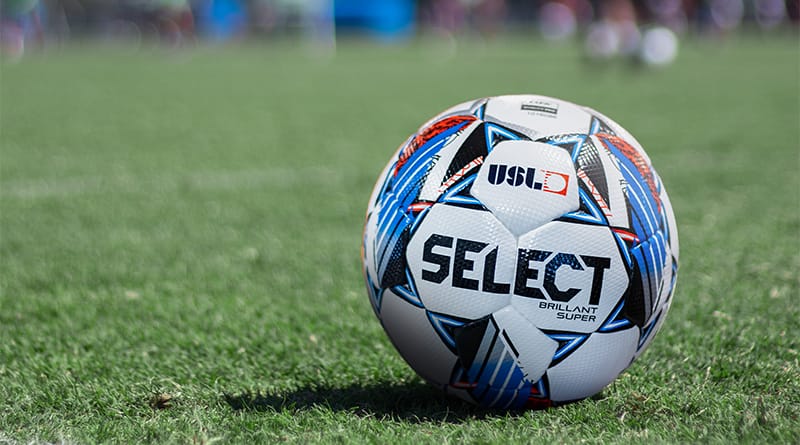- LugoSport Newsletter
- Posts
- The Race for Division I: USL's Bid to Rival MLS
The Race for Division I: USL's Bid to Rival MLS
America's soccer showdown... will USL's top tier league be able to compete against the MLS dominance for the American soccer market?

USL Division I: A New Era in U.S Men’s Pro SoccerThe USL is launching a bold new project, USL Division One, a top-tier men’s professional soccer league set to compete directly with Major League Soccer (MLS). Announced in early 2025, the league is targeting a 2027–2028 debut and aims to earn Division I status from the U.S. Soccer Federation just like the MLS currently holds. This move marks one of the most significant shifts in U.S. soccer since MLS began in 1996. USL’s goal is to create a league that expands opportunity across more markets and gives fans and players new pathways to the highest level of the sport. The project will complete a three-tier structure under the USL tiers which are, USL Championship (Division II) and USL League One (Division III) sitting below the new top tier. Most importantly, the league will introduce promotion and relegation, letting clubs earn their place on the field rather than through expansion fees — a first for professional men’s soccer in the U.S. The vision is extremely ambitious and even some experts argue that it might be unattainable. However, The USL has been able to spot the industry deficiencies that have held back the US from being global leader in soccer around the globe. This gives the USL an optimal chance at taking the throne the MLS. |  |
USL’s blueprint to leapfrog the MLS…USL’s ambitions are innovative for the US, but this model is not new at all. They are looking to build a three-tier system with promotion and relegation — a first for professional men’s soccer in the U.S. Clubs would have the chance to move up or down based on performance, something fans around the world love but American leagues have never tried at this scale, including across all sports. The new Division One would sit above the existing USL Championship and USL League One, creating a true soccer pyramid. One of the biggest differences from MLS is the business model. USL plans to allow independent club ownership, giving local teams more control over how they grow, market themselves, and connect with their communities rather than franchising like the MLS does. The league expects to launch with at least 12 teams, expanding soon after, with each club required to meet Division I standards — solid financial backing, strong ownership, and stadiums that hold 15 000 or more fans. |  |
_____________________________________________________________________
How Corporate Partnerships Will Propel USL’s MovementTo compete with Major League Soccer (MLS), the United Soccer League (USL) will need to secure powerful corporate partnerships that can fuel its new Division One project. Sponsorships, stadium investments, and media rights will shape how far the league can go — and how quickly it can establish itself as a true rival to MLS. With MLS locked into an exclusive streaming deal with Apple TV, USL sees an opportunity to offer a more flexible and open broadcast model. This could attract media platforms and sponsors looking for greater access and visibility. The league’s leadership — including Kewsong Lee, former CEO of The Carlyle Group, and Tony Scholes, a former Premier League executive — brings financial credibility and global experience that can help secure those relationships. Early partnerships are already setting the tone. The USL’s deal with boxLIFE, a company that converts shipping containers into premium suites and fan zones, shows how the league is thinking creatively about stadium experiences. These types of collaborations can make matches more appealing for both fans and advertisers. To succeed, USL Division One must expand its network of partners across several key areas:
If USL Division One lands the right mix of national sponsors, broadcast partners, and innovative fan experience brands, it could build a strong commercial foundation to rival MLS’s dominance. But if those deals stall, the league risks entering the market underfunded and underexposed. Either way, this project represents one of the most ambitious corporate opportunities in American soccer — a chance for brands to get in early and help shape the next chapter of the game’s growth in the United States. |  |
_____________________________________________________________________
In SummaryThe launch of USL Division One signals a turning point for professional soccer in the United States. For the first time in decades, Major League Soccer will face a legitimate competitor at the same tier — one that embraces promotion and relegation, independent ownership, and a broader vision for community-driven growth. If the USL executes its strategy well, combining corporate partnerships, private investment, and local engagement, it could redefine how soccer operates in America. The opportunity is massive: build a league that’s financially sustainable, accessible to fans, and open to competition on and off the pitch. Success won’t come easily — MLS’s financial strength, brand recognition, and global reach set a high bar. But with the right mix of sponsors, investors, and bold leadership, USL Division One could finally give American soccer something it’s lacked for decades: true competition at the top |  |
_____________________________________________________________________
Subscribe for more!
Further Reading:
Sports Business Journal – “USL plans to launch Division I men’s league to take on MLS” (February 2025)
– Covered the official USL Division One launch plan, timeline (2027–28), and compliance with U.S. Soccer’s Division I standards.
The Guardian – “USL to launch new league at same tier as MLS” (February 2025)
– Reported on the USL’s ambitions to rival MLS and the implications of the promotion and relegation structure.
USL Official Site (uslsoccer.com) – “USL to introduce promotion and relegation system” & “USL partners with boxLIFE to enhance fan experience”
– Provided official details on the three-tier league structure, stadium criteria, and creative stadium partnership with boxLIFE.
FourFourTwo – “Kewsong Lee joins USL as Vice Chair amid Division I expansion plans” (March 2025)
– Announced Kewsong Lee’s appointment and analyzed the league’s leadership strategy, financial vision, and global alignment.
Financial and Market Context
LugoSport – “The MLS Private Equity Experiment: Can Funds Score Without Control?”
– Explained how private equity has entered MLS and why similar investments could find early-stage opportunity in USL’s open ownership model.
Front Office Sports – “Private Equity and Sports Growth in the U.S.” (2024)
– Provided context on how institutional investors are increasing exposure to U.S. sports properties.
Sportico – “Valuations of MLS Clubs Continue to Climb” (2024)
– Used for reference on average MLS club valuations (~$700 million) and historical financial growth.
Ministry of Sport – “United Soccer League Expands Vision with Division One Men’s Professional League” (2025)
– Outlined USL’s market goals, structural ambitions, and investment appeal for new stakeholders.
 Tekker90 scouting a Tampa Bay Super Cup 2025 |  Signing Day December 2023 |